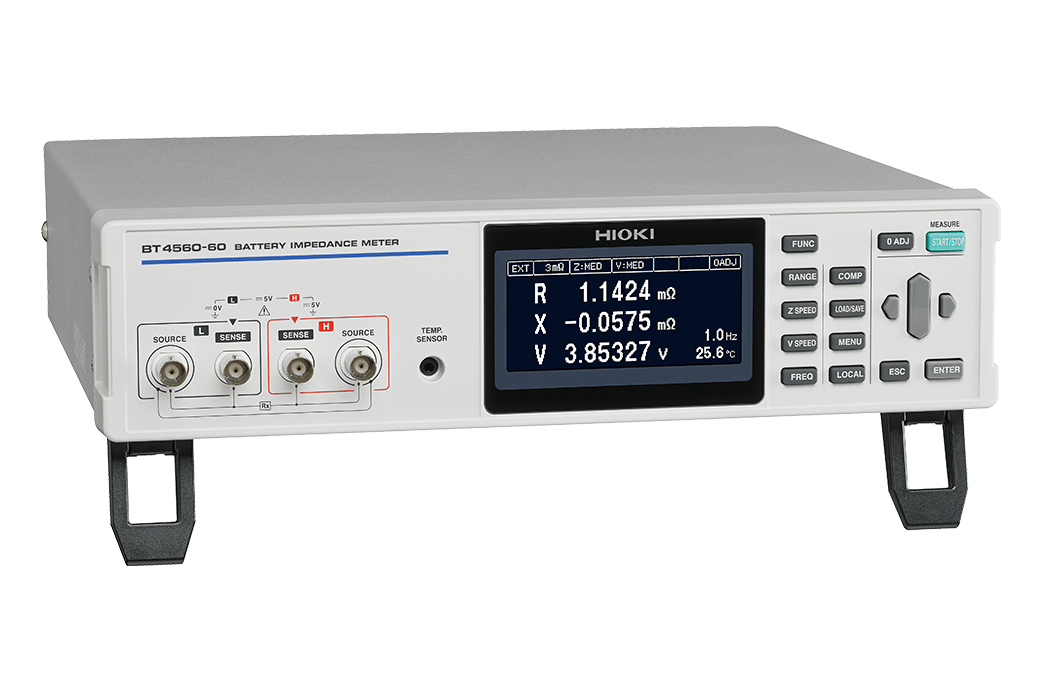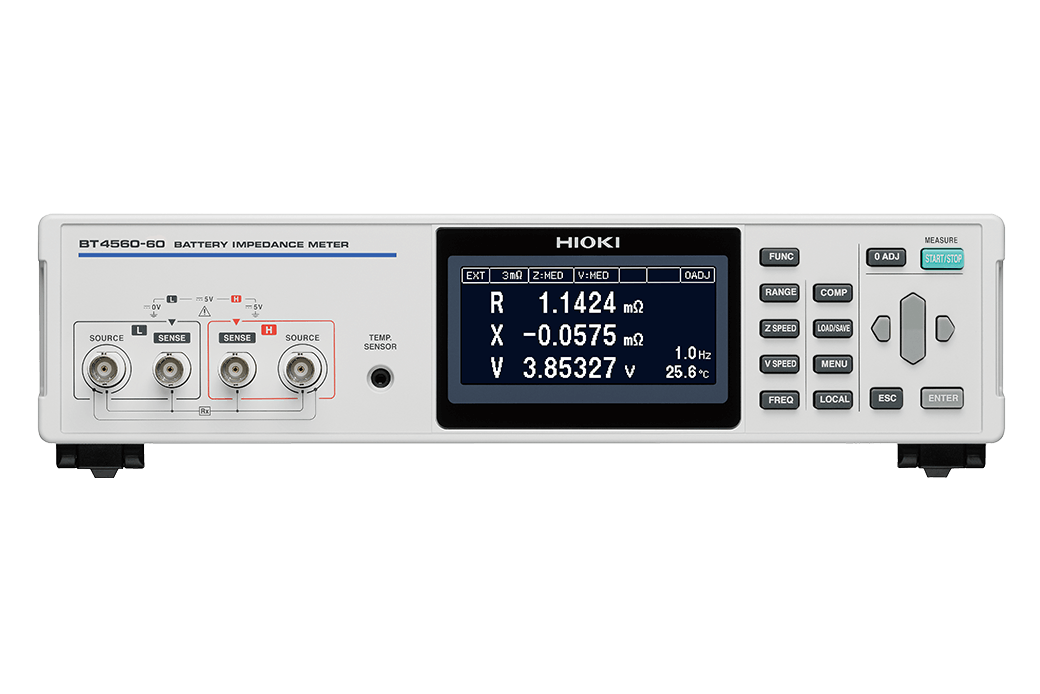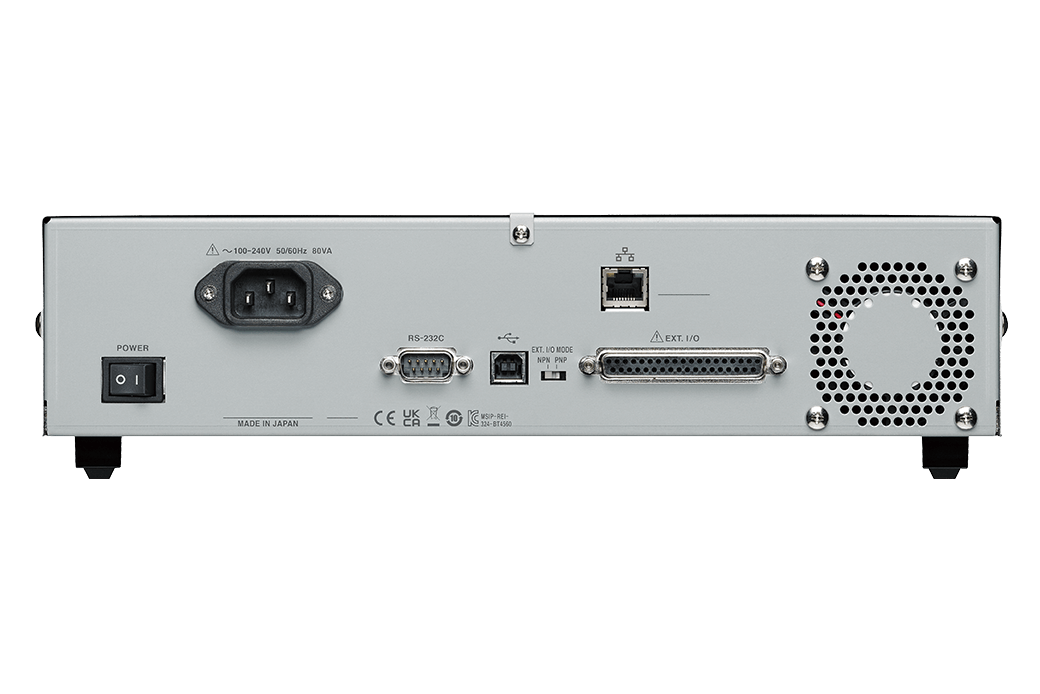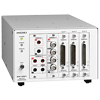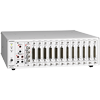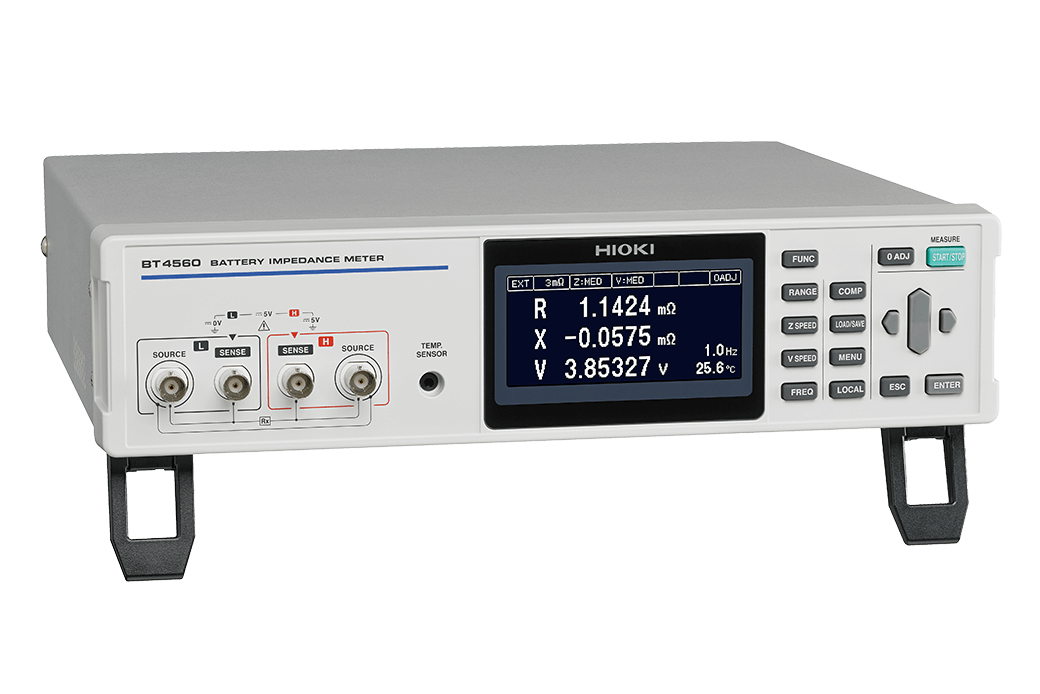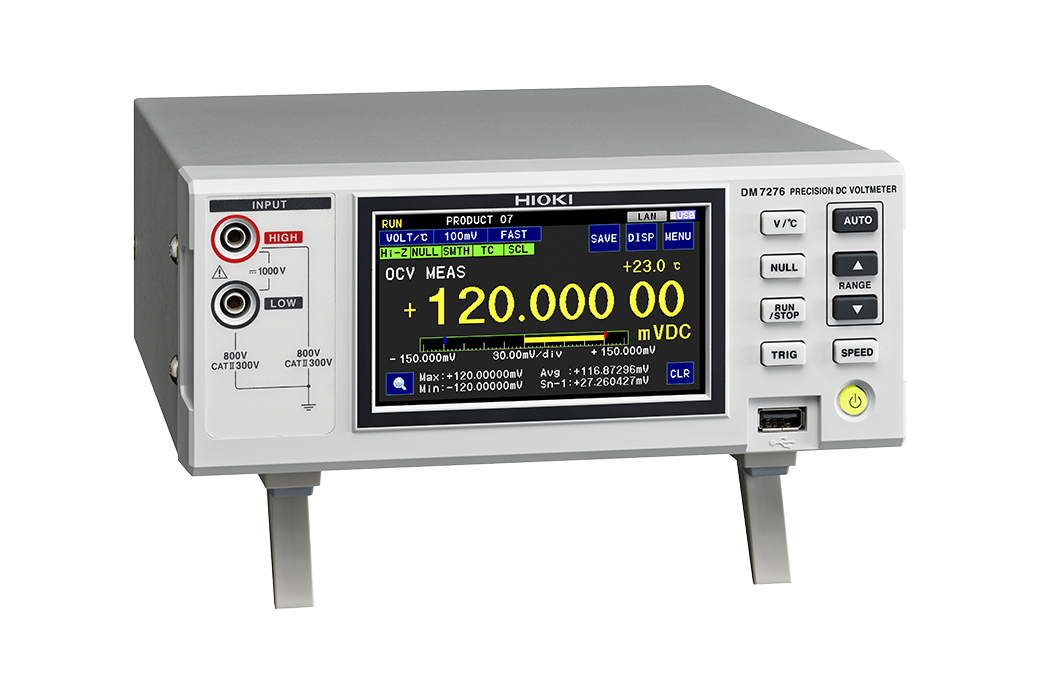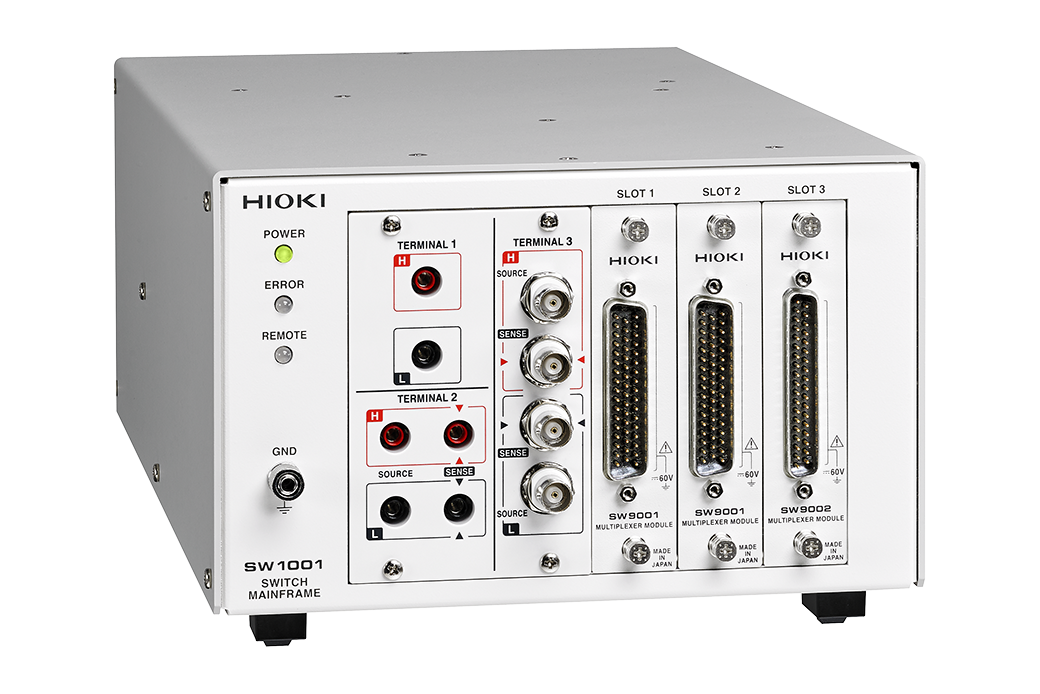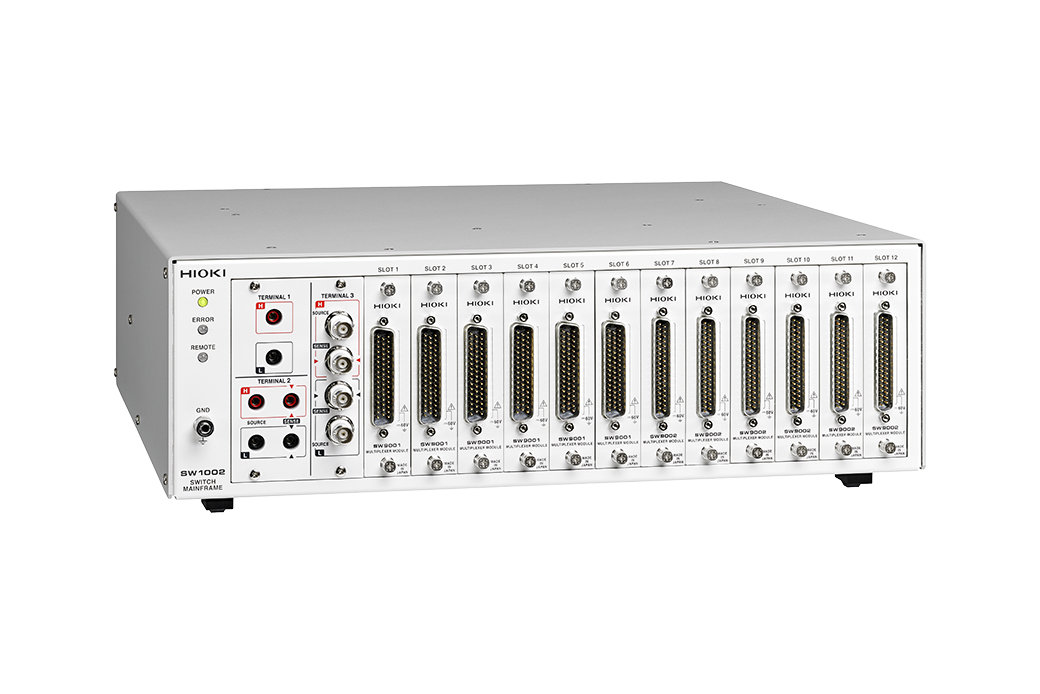BATTERY IMPEDANCE METER BT4560-60
Reliable EIS measurements of high-capacity battery cells for EVs and ESSs
NEW
The Battery Impedance Meter BT4560-60 can make EIS(*1) measurements quickly and easily in applications ranging from R&D to manufacturing. With its wide EIS measurement frequency range of 0.01 Hz to 10 kHz, the BT4560-60 is especially suited for battery cell design research and development.
By adding the Switch Mainframe SW1001 or SW1002, the system can be easily expanded into a multi-channel evaluation. This allows for automated and efficient high-precision EIS measurements of multiple batteries.
- *1:Electrochemical Impedance Spectroscopy (EIS) is a type of testing that measures a battery's impedance across a broad frequency range using small AC signals. The technique, which yields detailed insights into characteristics such as a battery’s internal resistance and electrode reactions, aids in the understanding of battery behavior and performance, making it useful in R&D and quality control applications.
Key Features
- EIS measurement frequency: 0.01 Hz to 10 kHz
- Simultaneous measurement of impedance, voltage, & temperature
- Convenient evaluation application software for R&D use
- Data compatibility with third-party equivalent circuit analysis software
- For production lines
- Scalability with the Switch Mainframe
Model No. (Order Code)
| BT4560-60 |
|---|
A reliable EIS measuring instrument for applications ranging from R&D to manufacturing
Manage Charge Transfer Resistance (Rct), Electrolyte Resistance (Rel), and Diffusion Resistance to improve the quality of battery cell inspections
- Set your own measurement frequency between 0.01 Hz and 10 kHz
- Use low frequencies to measure charge transfer resistance and diffusion resistance
- Use high frequencies to measure electrolyte resistance and welding resistance
- Create Nyquist (Cole-Cole) plots with bundled application program
- Use equivalent circuit analytic software to analyze internal battery defects
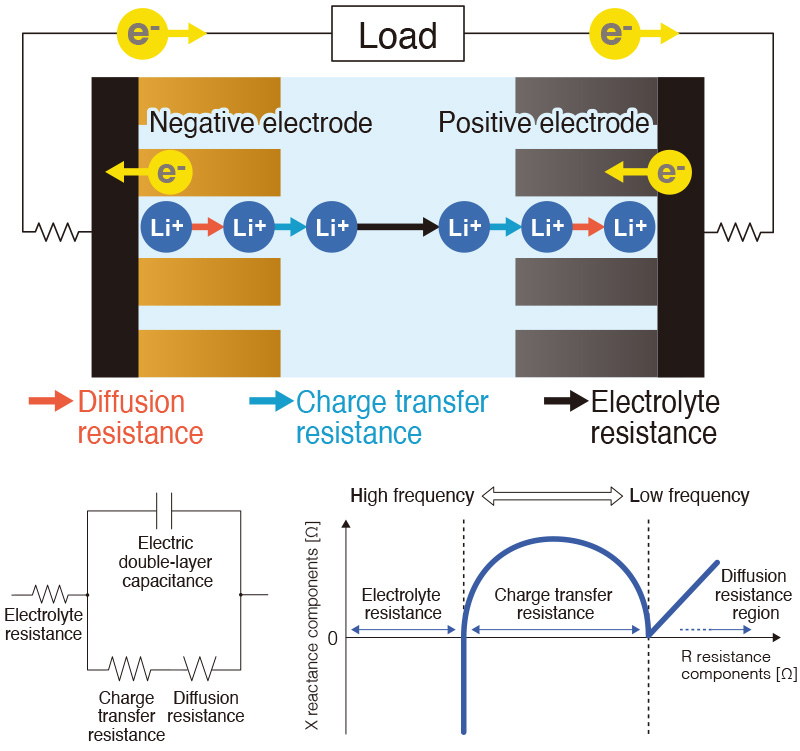
Create Nyquist plots instantly
Nyquist plots (Cole-Cole) of Lithium-Ion batteries can provide invaluable insights into the battery chemistry and aid in research and development. This type of analysis has often been complicated, time-consuming, and expensive.
Using Hioki's BT4560-60 Battery Impedance Analyzer connected to your PC, you can perform a frequency sweep quickly and easily, with the results plotted in real-time.
Measure very low impedances of 1mΩ or less
Some high-capacity Li-ion batteries have an internal impedance less than 1 mΩ.
The BT4560-60 is designed to measure very low impedances of 1 mΩ or less with high stability and reproducibility.
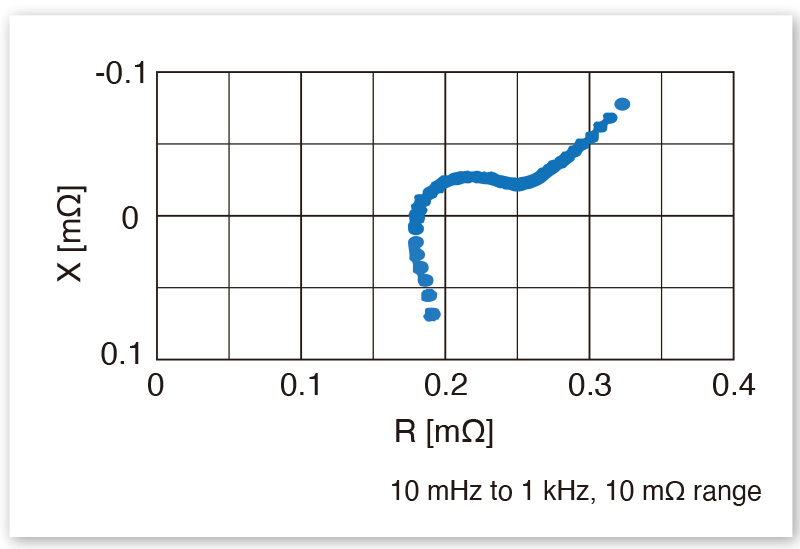
Dedicated probes for four-terminal pair measurement reduce the magnetic flux generated
Probes with a four-terminal pair structure provide very stable measurement that is less affected by environmental noise or cabling.
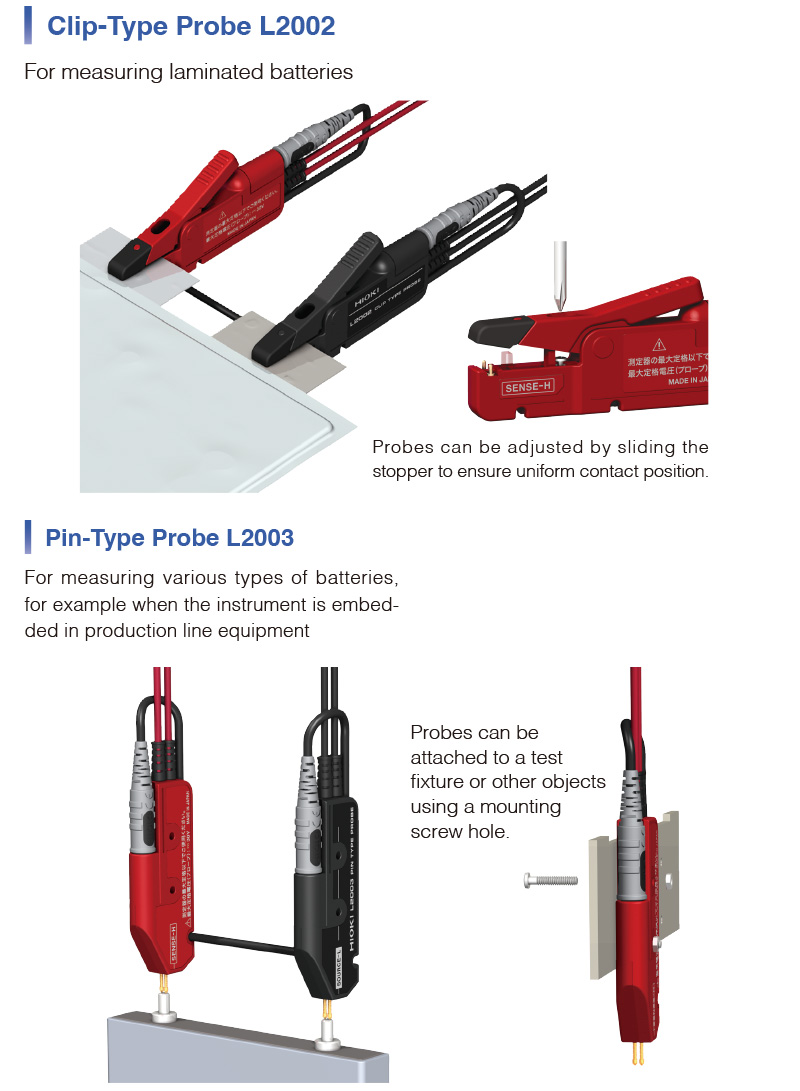
Basic specifications
| Allowable input voltage | Up to 5 V | |||||
|---|---|---|---|---|---|---|
| Measured items | Impedance, voltage, temperature | |||||
| Impedance measurement | Parameters: R (resistance), X (reactance), Z (impedance), θ (phase angle) Frequency: 0.01 Hz to 10.00 kHz (For the 1.06 kHz to 10.00 kHz range, measurements below 1 mΩ in the 3 mΩ and 10 mΩ ranges, and below 10 mΩ in the 100 mΩ range, are not covered by the accuracy guarantee.) Measurement ranges: 3.0000 mΩ, 10.0000 mΩ, 100.000 mΩ Measurement current: 3 mΩ range: 1.5 A rms, 10 mΩ range: 500 mA rms, 100 mΩ range: 50 mA rms |
|||||
| Voltage measurement | Measurement range: 5.00000 V (single range), measurement time: 0.1 s (FAST) to 1.0 s (SLOW) | |||||
| Temperature measurement | Range: -10.0°C to 60.0°C, measurement time: 2.3 s | |||||
| Basic accuracy | |Z| : ±0.4% rdg. θ: ±0.1°, V: ±0.0035% rdg. ±5 dgt., Temperature: ±0.5°C (at 10.0°C to 40.0°C) | |||||
| Functions | Comparator, self-calibration, sample delay, average, voltage limit, potential gradient compensation for impedance measurement, charge/discharge prevention during AC signal application, key lock, system test, panel saving and loading (up to 126 condition sets) | |||||
| Interfaces | LAN, RS-232C, USB, EXT. I/O (NPN/PNP can be switched) | |||||
| Power supply | Rated supply voltage: 100 V to 240 V AC Rated supply frequency: 50 Hz/60 Hz Rated power 80 VA max |
|||||
| Dimensions and weight | Approx. 330W × 80H × 293D mm (12.99W × 3.15H × 11.54D in.), approx. 3.8 kg (134.0 oz.) | |||||
| Included accessories | Power cord × 1, instruction manual × 1, zero-adjustment board × 1, USB cable (A-B type) × 1 | |||||
Probes and sensors (5)
4-Terminal Probe L2000: Cannot be used with 3 mΩ range when connected to the BT4560-60, no combined accuracy defined.
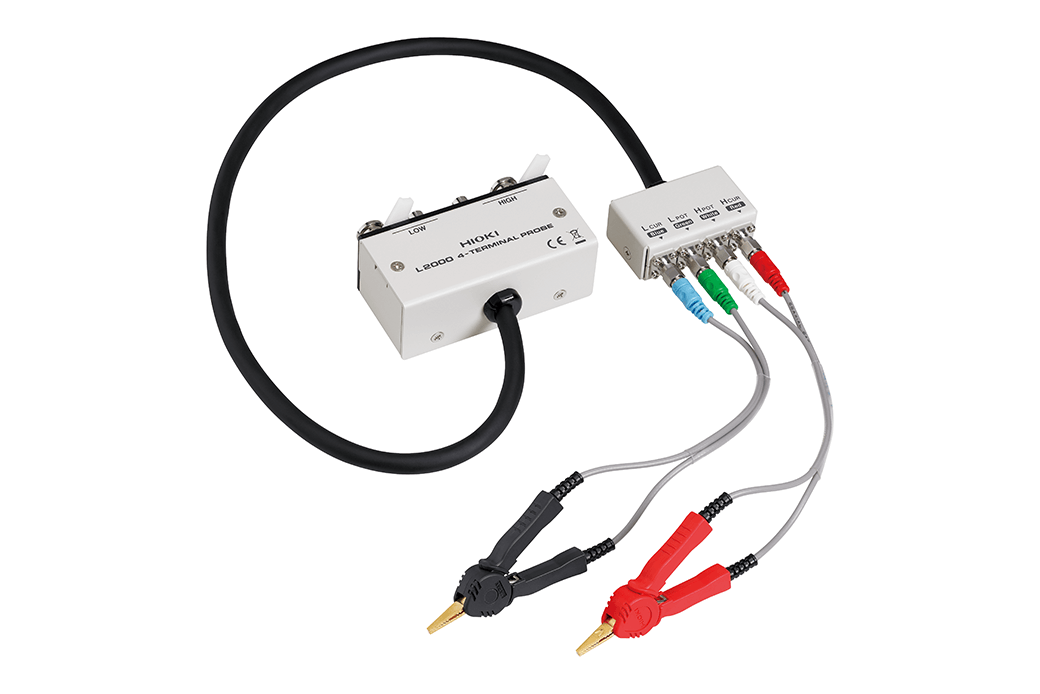
Cable length 1 m (3.28 ft), DC to 8 MHz(Can be measured up to 10 MHz, when combined with the special order model IM3536-01), impedance characteristics of 50 Ω, 4-terminal pair configuration, measurable conductor diameter: ø0.3 (0.01 in) to 5 mm (0.20 in)
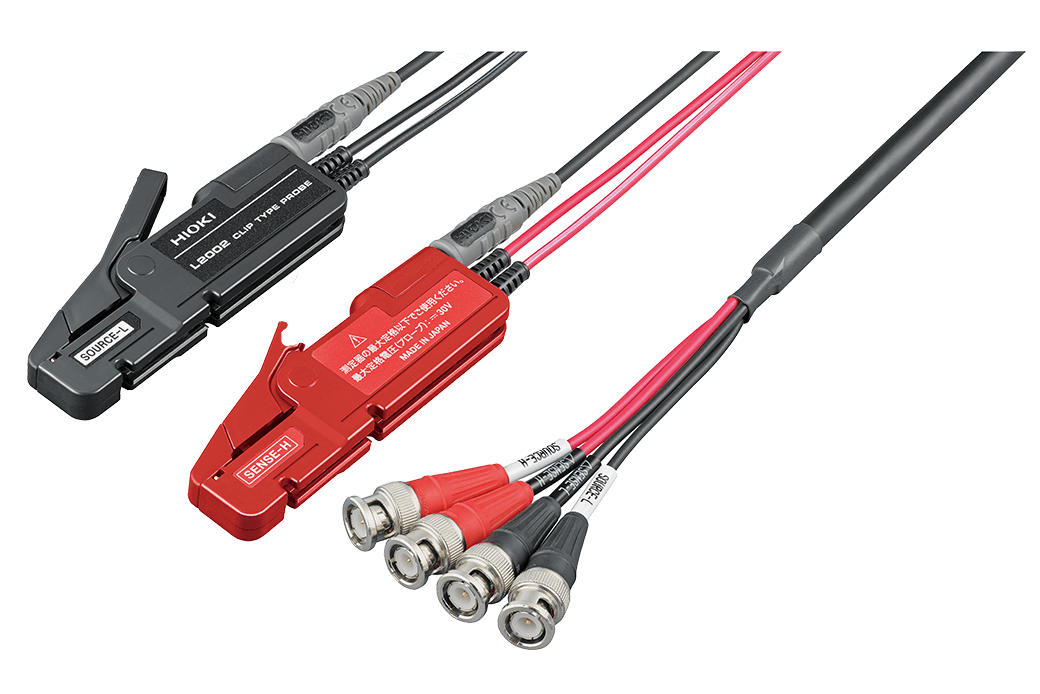
Cable length 1.5 m (4.92 ft) length
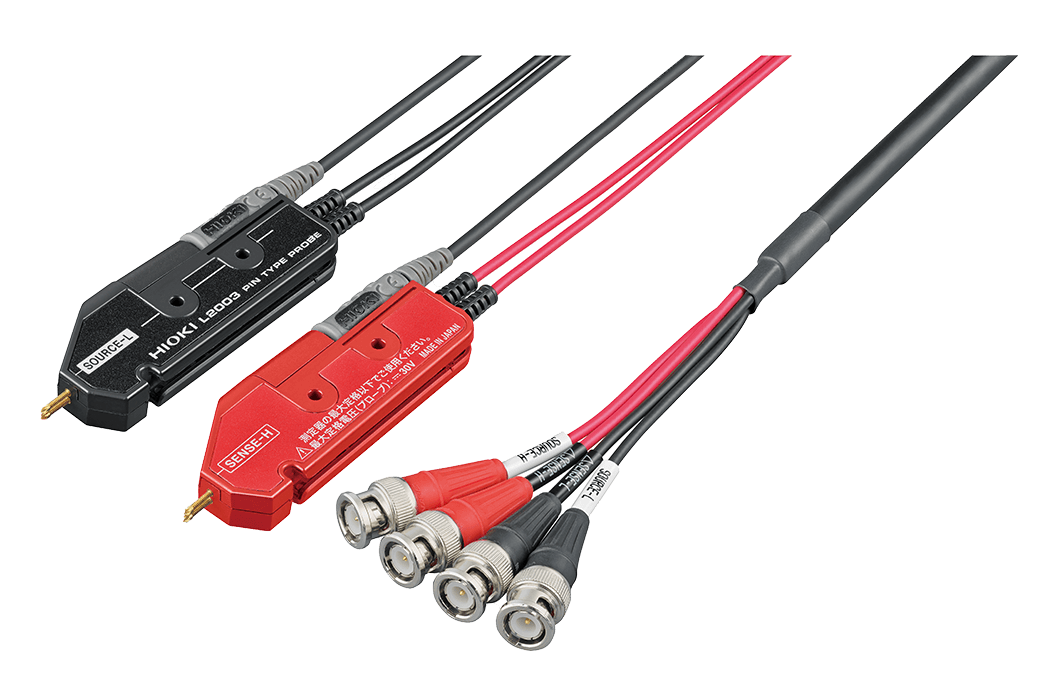
Cable length 1.5 m (4.92 ft) length
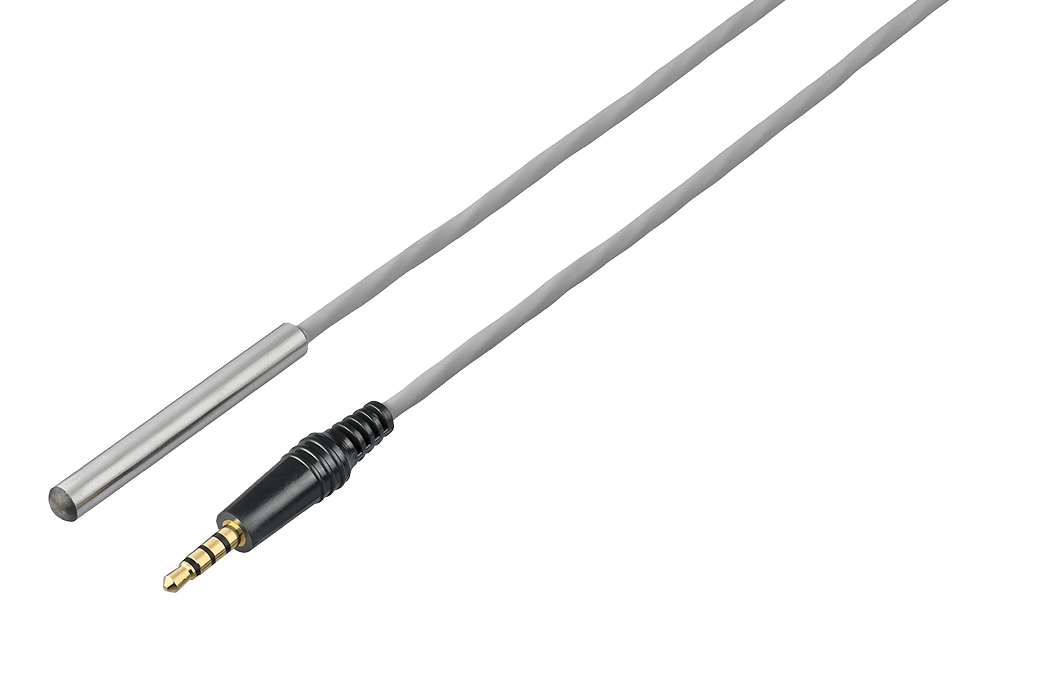
Cable length: 1 m (3.28 ft.)
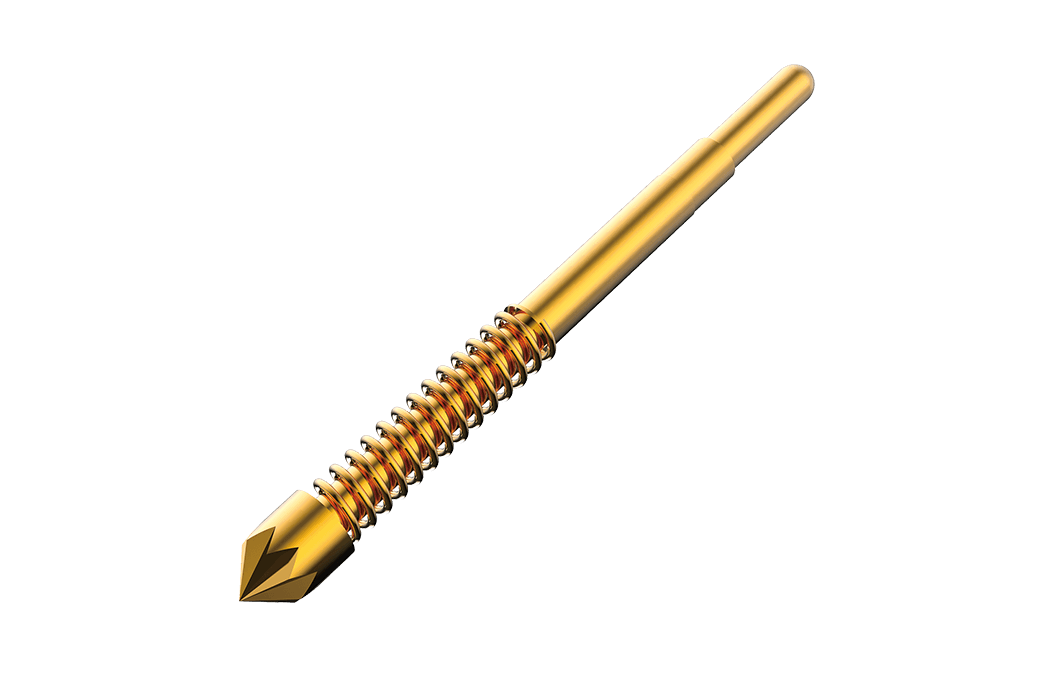
To replace the tip of models Pin Type Lead 9772, L2100, L2110, L2120, and Pin Type Probe L2003 (one pin)
Connect via PC (2)
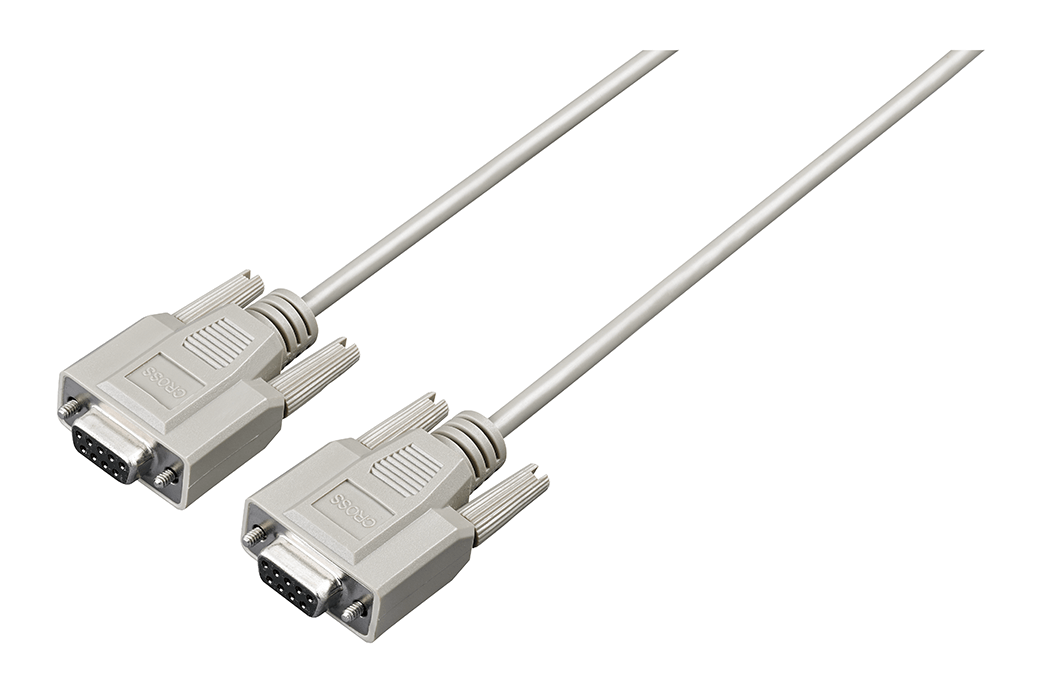
9 pin - 9 pin, cross, 1.8 m (5.91 ft) length
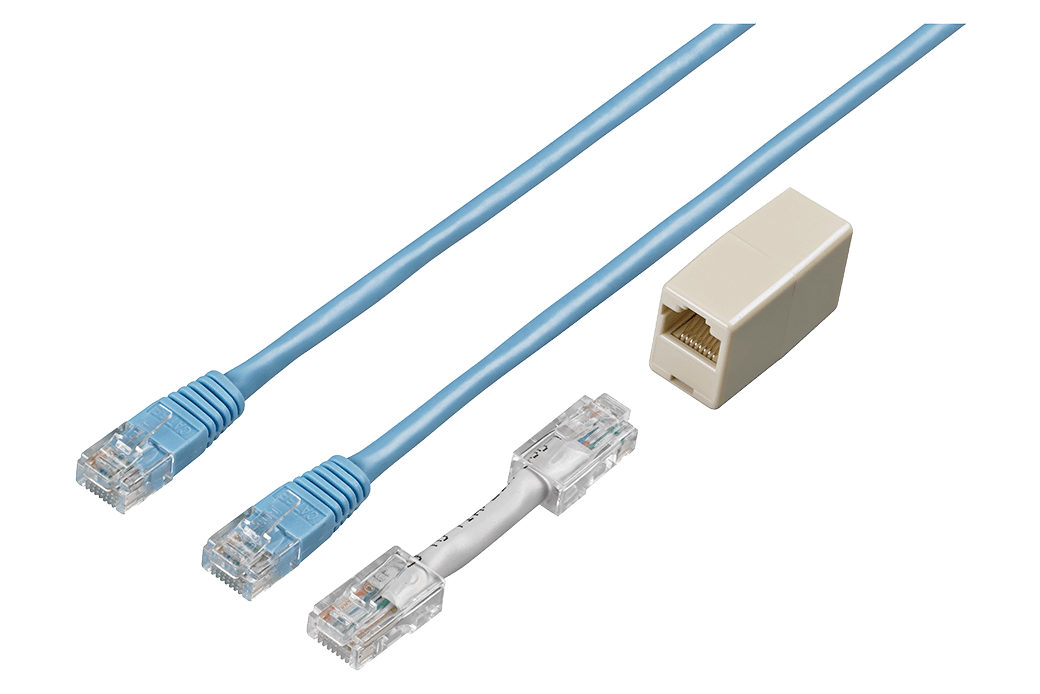
Straight Ethernet cable, supplied with straight-to-cross conversion adapter, 5 m (16.4 ft.)

